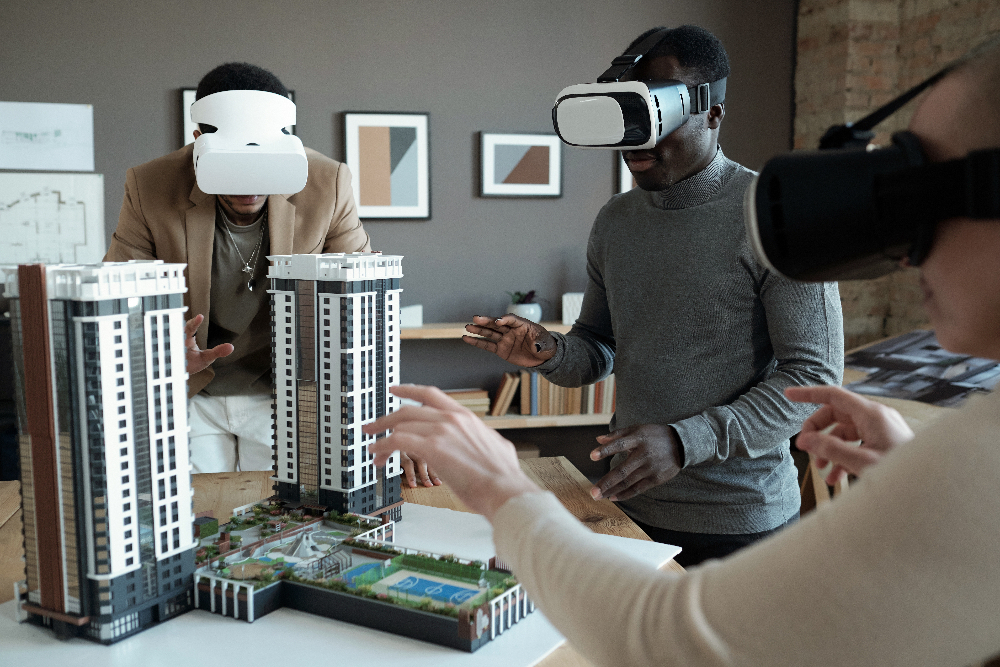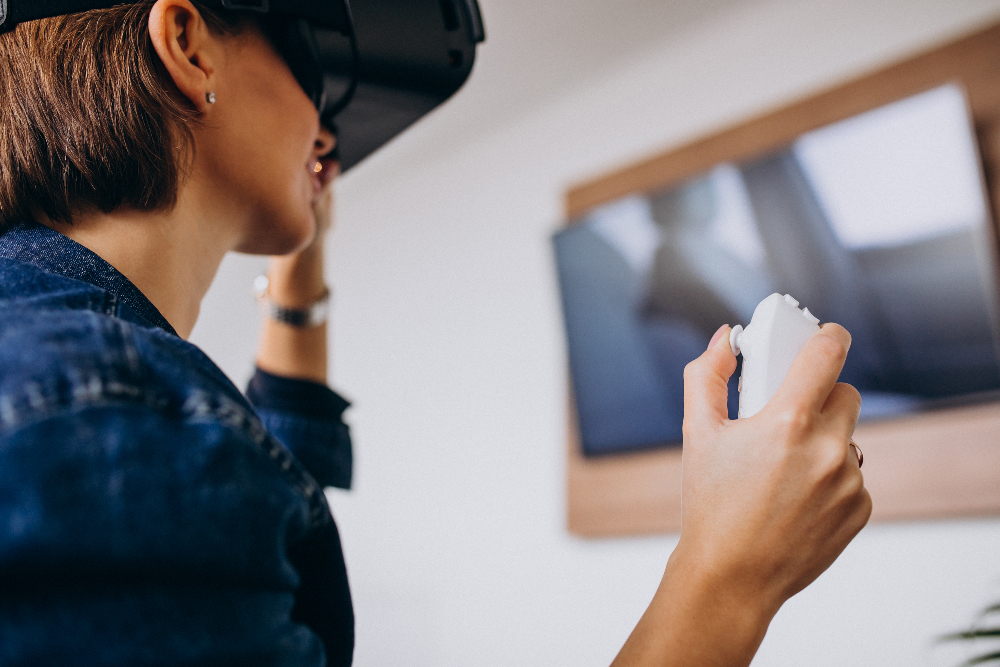Choosing to purchase a place that you can call home is a very serious matter for any of us. Each one of the clients has their own preferences when it comes to house tours and state agents, which is why it can be difficult for the real estate agent what approach to pick for each customer. Virtual Reality estate agents are the answer, and we tell you why.
Considerations for building a virtual reality real estate experience

In order to create a virtual reality real estate experience that really generates interest and guarantees conversions, several aspects must be taken into account. A fundamental element is that the purchase of real estate through virtual reality must not only emulate in the best possible way the physical purchase experience, but it must also be better, that is, it must offer additional benefits.
This means that virtual reality estate agents should not only offer virtual tours of the properties, but a complete immersive experience that can truly awaken exciting sensations in their buyers.
For example, the virtual tour should be able to simulate different light conditions (morning, afternoon, evening, night), weather, and season of the year; review and change each of the finishes and types of decoration of the property; offer virtual tours of the surroundings of the property, and more.
In general, the virtual tour should work not only as a physical trip (take into account that many of these customers choose this form of purchase because they are in another country or city and want to save the transfer), but also as a trip in time, since they can see how the property can change as they make the modifications that the customer wants or projects, or even how the family grows.
How can virtual reality be used for real estate?

First you might wonder, how does virtual reality can be used for real estate? Real state VR can be a complete immersion experience, specially when paired with for example a VR headset. Although augmented reality can also add a digital element to a smartphone or an iPad. Both can help for example, to allow buyers to experience a space before construction completion.
Virtual property showcases
As mentioned above, with the help of VR headsets is all you need for a virtual showcase. Most importantly, customers can visit many properties with moving an inch. There two 3D types of virtual tours you should know about:
1.- Guided tours: These are similar to the traditional real estate promotional videos, but with VR, the guided tour can be entirely virtual, or it can be a 360° video.
2.- Interactive tour: With this type of virtual tour, the consumer has the option to interact with the properties space by clicking a preferred spot in the field of vision, creating a more immersive and interactive experience.
Virtual staging
A customer will likely choose or like better a version of the property which is already furnished, to set themselves in the experience of already living there. This means that a staged home will sells for 17% more on average and 87% faster. With VR there are endless ways to stage and furnish a property according to the customer likings.
Architectural visualization
This modern modality can turn a black space of land into an architecture using virtual and augmented realities. It benefits both real estate agents and possible buyers, since customers will know for sure if the investment is worth it and can help estate agents to reach more clients and close more deals.
Virtual commerce
With V-commerce the customer has total control of how they imagine their dream home, all they have to do is go into an online store and select the elements they want to see on their virtual tour, if they wish so, the shoppers can buy the selected elements. This way the customer can make all the adjustments they wish to do to the visited virtual spaces. In this sense virtual estate agents can also work hand in hand with home décor retailers to create a partnership.
Example of what a virtual reality real estate application could look like
Based on what has already been explained, a virtual reality real estate app should have several key features. Let’s take a look at some of them:
- It must be very realistic: customers must feel like they are actually in the property they want to buy.
- It must have features to personalize the experience one hundred percent: it must take into account EVERYTHING. This includes how the customers who use it will see the property. For example, if it is a person with reduced mobility, the app must be able to show if this property is friendly to their condition.
- It should go beyond the property: show surroundings, city data, weather conditions and more.
- Make projections: both architectural and decorative.
- The app must be usable on different devices: such as virtual reality viewers, cell phones, tablets or computers.
- The user experience must be friendly and agile: Loading speed is essential, as well as clarity in navigation.
Benefits and usages of virtual reality for real estate agents:

We will tell you about all the benefits and usages of this high tech in the following:
1.- Fewer trips to the properties: when a real estate agent has to manage many properties, taking trips back and forth can rob the agent a significant amount of time, but a virtual reality real estate can solve to problem with a digital model of the houses.
2.- Window-shop real estate VR: this modality gives the shoppers the option to examine the properties from afar, which makes the customers feel less pressure to make a purchase and can be able to explore how much as they need and at their convenient time since they won’t need to go anywhere to see the properties.
3.- Reduced costs: One might think that creating a real estate VR would be very expensive, but the truth is that the costs can be recovered from the same app. Clearly fuel costs are greatly reduced for both parties, also, marketing, and promotional materials would be reduced as well.
4.- Emotional connections: The realism of the experience can help consumers form an emotional bond with their new home, which is unlikely to happen from just a video of promotional photos of the property.
5.- Unlimited customization: virtual reality estate agents can now customize their tours according to any and every target customer, like for example a change in furniture, lighting and facts about the property, there are endless possibilities.
Virtual reality in the real estate industry has become the new trend among top agencies, having so many benefits how wouldn’t it? It saves times for all the parties involved, and the virtual tours of properties are available at any time of the day or night, and at any location where the customer is at.
What virtual reality services do we offer for the real estate market?
At Stringnet we offer real estate companies technological possibilities so that they can provide their clients and prospects with a truly meaningful service.
Our virtual reality solutions for real estate include:
- We develop one hundred percent virtual shopping experiences: applications from which all stages of the buyers’ journey can be realized.
- We develop experiences that can be fully personalized: the key to commerce today is total personalization, and when it comes to real estate and virtual reality, it’s a must. We have the technology to do it.
- User-friendly applications: VR platforms for real estate will be used by people who are not tech-savvy, so we focus on usability. We are interested in making the platform more user-friendly for both clients and virtual reality estate agents.
- We offer permanent support, advice and software updates. We also provide training to the real estate staff so they can guide the clients in the best way through the virtual buying experience.
- If your real estate business has not yet entered the virtual reality arena, we can help you create your digitalization strategy from scratch.
We at Stringnet see it as a win-win situation and are ready to discuss your vision at any time. We can help you to reduce costs and differentiate yourself from other real estate competitors. Just let us know if you want to talk.


